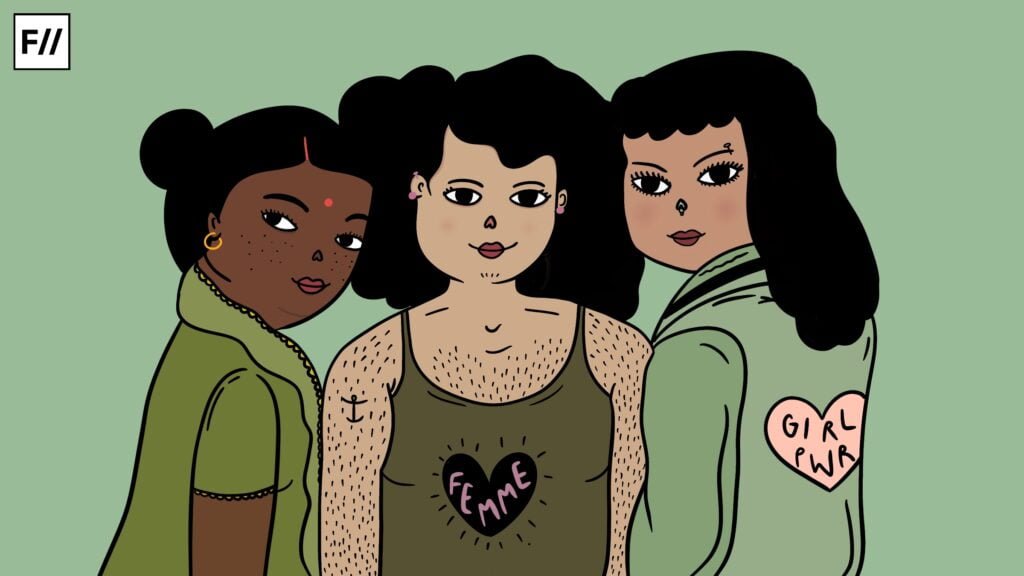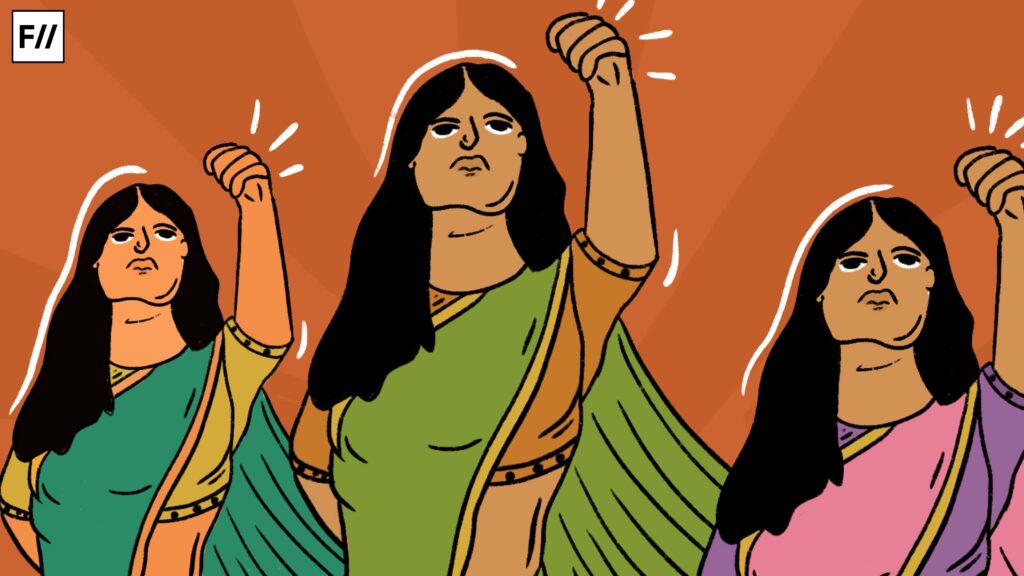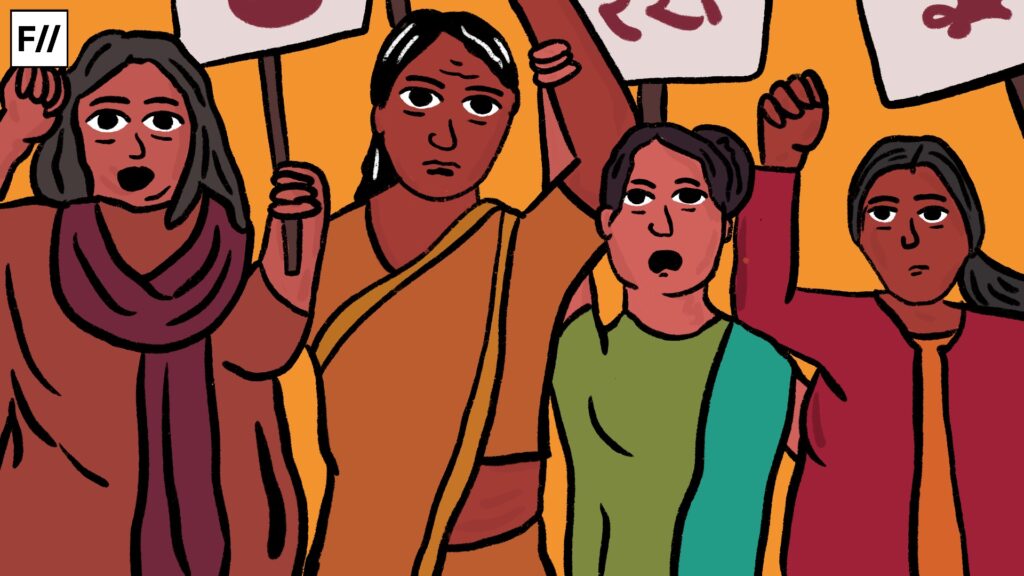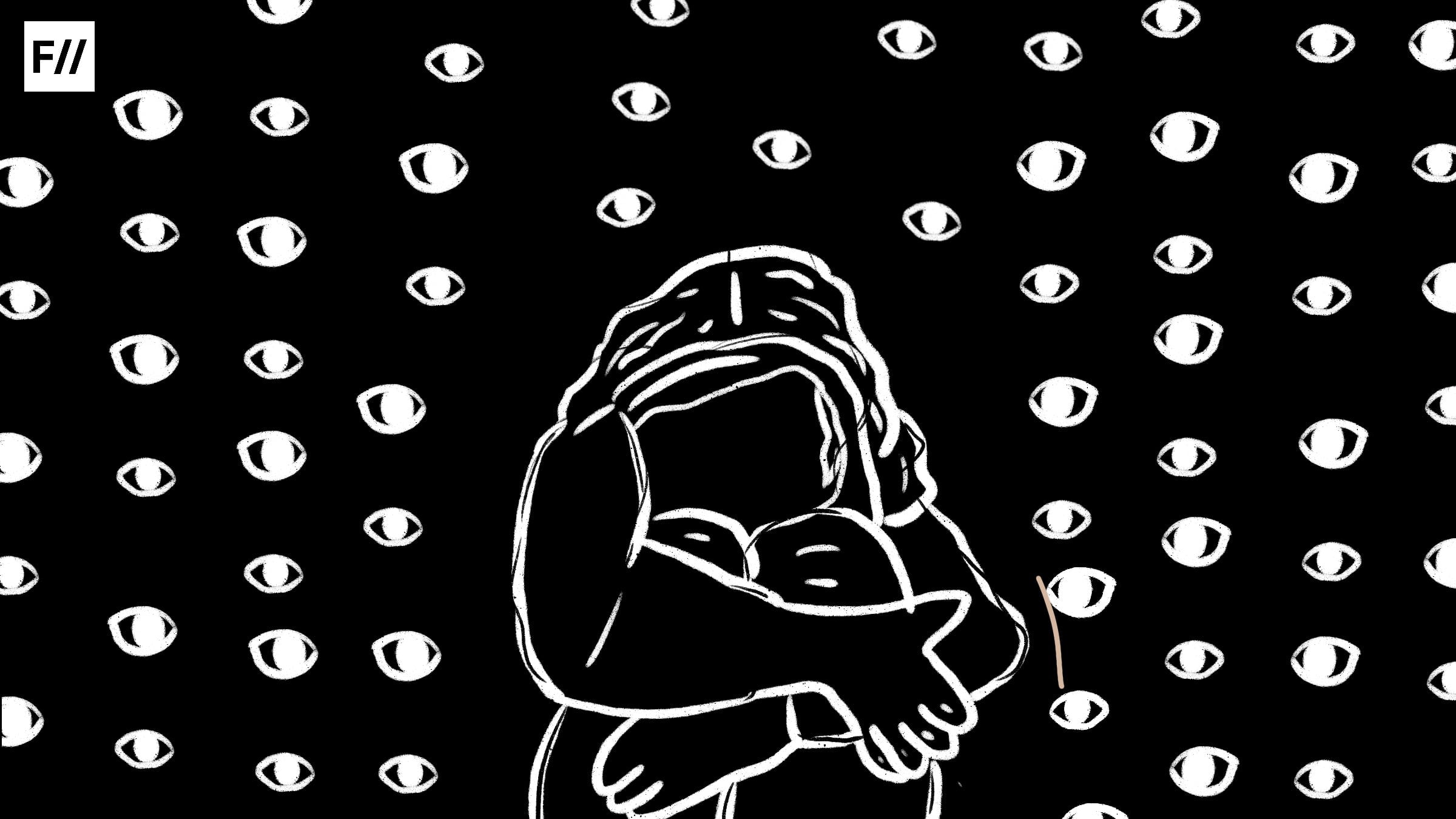Trigger Warning: Gender-Based Violence
Even in the 21st century, despite its scientific advancement and technological invention, a major part of India lives in the shadow of superstitions and persecutes women under the charges of witchcraft. Witchcraft and occult rituals have a deep-seated history of violence in all regional cultures across India yet women continue to be tortured and threatened by it. In a recent case hearing at the Allahabad High Court, a man along with his family was accused of murder as they subjected his wife to occult rituals to treat infertility. The victim was burnt 17 times by red hot pinch under the instruction of an occultist and due to such gruesome and repeated torture, she died.
The court denied bail to the accused while the bench of Justice Saurabh Shyamshrey observed, “The mindset of the applicant and co-accused who still believe in occultism to be a cure of female infertility even before ascertaining that it might be a case of male infertility, is of persons living in the stone age and not in 21st Century, where science as developed to such extent that even infertility can be medically cured, therefore, absolutely no bail at this stage.”
Root and causes of witchcraft rumours: Witch-hunt and occult practices
During the mediaeval period in Europe, any woman who showed signs of self-sufficiency or independence was accused of witchcraft. They were put through trials that subjected them to gruesome torture, such as drowning them in rivers, burning them at the stake, or stoning them to death. Even as the light of the Renaissance gripped European continents with modern scientific learnings and discoveries, women continued to be persecuted as witches and burnt at the stake even more than ever.

In colonial Massachusetts, between 1692 and 1693, more than 200 women were accused of being witches for so much as breathing in the wrong directions. We have come centuries forward from the dark days of the past with insurmountable scientific knowledge and discoveries. Yet, women are still condemned to cruelty, brutal torture, and painful deaths under suspicions of being a witch.
Witch-hunting continues in rural parts of India. Illness, poor health of small children, and discord in land division often instigate suspicion of witchcraft, and single, elderly women living on their own are usually accused of it. Several colloquial terms with derogatory connotations such as dayan, chudail, and fuskin in the Santali language are used to designate a woman practising witchcraft.
Witch-hunting continues in rural parts of India. Illness, poor health of small children, and discord in land division often instigate suspicion of witchcraft, and single, elderly women living on their own are usually accused of it. Several colloquial terms with derogatory connotations such as dayan, chudail, and fuskin in the Santali language are used to designate a woman practising witchcraft.
Also Read: The Gendered Accusation Of Witchcraft: Why Only Women?
Such a mindset stems from deep-seated misogyny existing within the local culture that encourages finding flaws within women, usually those who are non-conforming to societal standards. Accusations of witchcraft are usually followed by moral panic, mass hysteria, and mob violence that overpowers and incapacitates any woman who presents a threat to society.
It is usually single women, unmarried or widowed, of elderly disposition, who are accused of witchcraft as they are not easily accommodated within the patriarchal society. The issue of witchcraft is specific to the intersection of caste, class, and gender. It is mostly women belonging to underprivileged castes or tribal communities living under insufficient financial moorings, who come under such accusations of witchcraft.
Conditions of women who are accused
PARI Network reports the story of Bholi Devi Vishnoi who had been branded as a dayan in the Dariba district of Rajasthan. It has been 15 years since January of 2005 when she was first accused of practising witchcraft and making their children sick. Bholi’s husband says that neighbours branded his wife as a witch after being denied access to their fields through his farm.

In April 2015, Rajasthan passed the Prevention of Witch-hunting Act. Since then 261 cases have been filed and only 109 chargesheet have been issued by the police. Yet, despite many efforts of the victimised families and activists, none has been punished.
Oftentimes, the mere hint of the accusation is enough to push a woman into social isolation and dregs of poverty. Even if she is not being tortured or killed, she is subjected to extreme mental distress, anxiety, isolation, and abandonment by her own family which often leads to the untimely death of the woman who is accused of such. Even children, and daughters-in-law of women accused of practising witchcraft bear the stigma throughout their lives.
Oftentimes, the mere hint of the accusation is enough to push a woman into social isolation and dregs of poverty. Even if she is not being tortured or killed, she is subjected to extreme mental distress, anxiety, isolation, and abandonment by her own family which often leads to the untimely death of the woman who is accused of such. Even children, and daughters-in-law of women accused of practising witchcraft bear the stigma throughout their lives.
In 2022, an elderly woman of 58 years old was assaulted by her relatives and was forced to eat excreta on suspicion of practising witchcraft. The incident took place in the Dumka district of Jharkhand. She had finally filed a police complaint against nine of her relatives who had been harassing her for days. In Jharkhand, a similar case of witchcraft in 2019 led to the murder of four elderly people. The four people were dragged out of their homes and were lynched to death on a similar suspicion of witchcraft.
In Jharkhand, due to sizable tribal population and poor healthcare system and infrastructure led inhabitants to seek out help from occultists and witch doctors. Therefore, they often resort to superstitious and violent practices under false beliefs. In 2020, the National Crime Record Bureau reported that 15 were murdered due to witchcraft practices. In the past 5 years, before 2022, Jharkhand, with a record of 173 deaths, shows the highest number of murders caused due to witch-hunting.

Similar incidents often take place in remote areas of West Bengal, Bihar, and Orissa. In 2020, a tribal woman and her two sons and daughters were murdered because they were suspected of practising witchcraft. Their bodies were dumped in the well near their house.
The violence of witchcraft rumour in tea plantations
In Bengal, single women who do not conform to societal norms are often branded as witches who practise black magic or ‘kala jadu’. Near around Jalpaiguri tea plantations of West Bengal, witchcraft rumours and violent rumours of witchcraft among the labour community were felt particularly strongly around the early 2000s. In 2003, five women were brutally tortured and subsequently murdered over the accusations of witchcraft. Their bodies were cut and thrown in a nearby river. This incident occurred during broad daylight in the rather populous and picturesque tourist spot of the Chalsa area of Jalpaiguri district.
Professor Soma Chaudhuri (PhD ) of Michigan State University closely looks at the problems related to witch-hunts in the tea plantation areas of West Bengal in her book Witches, Tea Plantations, and Lives of Migrant Labourers in India: Tempest In a Teapot. Professor Chaudhuri discusses the prevalence of such practices particularly in the states of West Bengal, Assam, Orissa, and its neighbouring states from a sociological perspective.
Professor Soma Chaudhuri (PhD ) of Michigan State University closely looks at the problems related to witch-hunts in the tea plantation areas of West Bengal in her book Witches, Tea Plantations, and Lives of Migrant Labourers in India: Tempest In a Teapot. Professor Chaudhuri discusses the prevalence of such practices particularly in the states of West Bengal, Assam, Orissa, and its neighbouring states from a sociological perspective.

She comments, “The geographical location of the tea plantations, the violent history of the Adivasi workers in the plantation system, the complete marginalisation of Adivasi issues from the mainstream politics, and the treatment of Adivasis particularly Adivasi women, provided initial clues leading to a decade long research as to why the incidents are taking place.”
Also Read: Family In Jharkhand Assaulted On Allegations Of Witchcraft: Women, Witch-Hunting, And Gender Bias
However, she warns against the gross generalisation of the problem as an Adivasi problem and encourages more sensitive, and cautious media reporting regarding such incidents. She locates lack of healthcare, improper implementation of reservation laws, constant threats of land encroachment, and community displacement heart of the problem. She also says, “The position of the Adivasi woman is perhaps the most vulnerable at this pyramid of hierarchy, where she faces both gender and ethnicity-related ostracism from members of the majority Hindu community as well as by Adivasi men.”
About the author(s)
Debabratee (she/they) is a student of English Literature at Jadavpur University. When they are not found reading or writing, they are found running after their pet dog and cuddling with him. They are avid binge-watcher of all kinds of OTT content and like to dissect and analyse them in their free time.




